The Mechanics of new media (science) writing
Articulation, Design, Hospitality, and Electracy
Nathaniel A. Rivers, Christopher Grabau, Katherine Kavanaugh, and Katie Zabrowski
This multimedia project employs and performs the full etymology of articulation—the linguistic, visual, embodied, and mechanical—to describe an advanced undergraduate course in science writing, which focused exclusively on new media storytelling. Articulation, which Patricia Harkin (1998) described as “both a saying and a connecting” (p. 494), is used to address issues of authorship and the knowledge-making practices of science writing, the mechanical practices of new media writing, the pedagogical practices and assumptions at work in teaching new media writing, and the evolution of science literacy into science electracy.
The project consists of a video serving as a portal through the concept of articulation and three free-standing podcasts taking up, in turn, the concepts of design, electracy, and hospitality. Complete student productions are also included. The goal of this project, reflected in its form and content, is to perform a convergence of the myriad ways in which articulation can and does happen, and to invite the audience to articulate the media as they see fit. The video and the podcasts share some sources and a theoretical framework, but the joints between them are soft, flexible, and implicit. The project works with scholarship in new media writing, the rhetoric of new media, instructional design, science literacy, and technical communication. The project is a collaborative effort, involving an instructor, an instructional designer, and two graduate students enrolled in the course as participant observers. Each element, produced by a participant in the course, performs the mechanics of new media and can be viewed or heard in any order as they each attempt to stand alone while joining with the others. By design, this webtext can be employed in ways specific to new media science writing specifically or to new media writing more generally. Hence, the parenthetical place of “science” in the title.
Finally, we composed our segments not as experts outside of the course but as participants in it: as ants myopically tracing our own paths through the course. These segments are attempts to articulate our individual and collective experiences through the terminology we are each comfortable in, and these choices of articulation produced unexpected but—we hope—useful resonances with one another and the work of the course. In this way, we hope the present webtext serves well the Praxis section of Kairos. Watch and listen to us work our ways through a course that grapples with rhetoric, technology, and pedagogy.
Video and Podcasts
Video: Articulation (Nathaniel)
This video lays the groundwork for a mechanics of new media science writing. It works through the concept of articulation and pulls together voices from new media rhetoric. Primarily tracing the etymology of articulation and its deployment in technical communication, the video also touches upon the concept's connections to cultural studies. That is, while the video largely deploys the epistemological ramifications of articulation, it indicates how the project as a whole deploys the strategic, political facets of articulation.
Furthermore, the video performs the complexity and, perhaps, necessary messiness of any articulation. While it employs the analogy of a train (a persuasive analogy proposed by Jennifer Slack, David J. Miller, and Jeffrey Doak [1993]), the video compositionally acknowledges that such an analogy is perhaps too clean and linear. Even Slack (1996) warned that articulation has at times been “linked to and defined by the rationalist paradigm” (p. 119). Stuart Hall argued “the unity formed by [...] articulation, is always, necessarily, a ‘complex structure‘” (as cited in Slack, 1996, p. 116); articulations are rarely straightforward or seamless. Indeed, Hall went on to argue that such structural complexity “requires that the mechanisms which connect dissimilar features must be shown” (as cited in Slack, 1996, p. 116). Certainly, things can be connected in the mechanically straight lines of a freight train, but articulations happen in many directions: vertical and horizontal, effable and ineffable. Even trains get covered in graffiti, which is its own practice of articulation. There is an incomplete, not quite rational explanation for articulations within the video: Why this sound? Why this song? Why this image? Why this stock footage? The concept of articulation foregrounds connections rather than flattening them out. Hall (1985) argued, “it is also important that an articulation between different practices does not mean that they become identical or that one is dissolved into the other. Each retains its distinct determinations and conditions of existence” (pp. 113–14). This is all to say that the weirdness of the video does intellectual work.
Podcast: Design (Christopher)
Joining together educational psychology and a unique brand of instructional design, this podcast discusses how a constructivist approach to course design provided effective conditions for learning and complimented the overall course goals for the use of new media technology within the field of science writing. Christopher's research interests involve investigating new, pedagogically sound approaches to teaching and learning. His academic interests include investigating effective ways to incorporate educational technology into teaching, blended and online course design, effective learning spaces, and creativity in the classroom.

Podcast: Hospitality (Katie)
Working with new or unfamiliar technologies often means forging a new and different kind of relationship. It is one marked by a profound and genuine openness toward those technologies, and it's something Katie refers to throughout this discussion as hospitality. Working with the notion of hospitality and building from interviews with students, this podcast articulates a pedagogical ethic for the new media writing classroom.

Podcast: Electracy, Part 1 (Kate)
This podcast explores the uncertainty surrounding the nature of science writing (both inside and outside of the course) in an effort to tease out a rich definition of the profession and to lay the groundwork for the epistemological concerns addressed in Part 2. Containing interviews with students, this podcast also reflects Kate's particular path to understanding science writing as a profession with a rich history, a promising future, and a simultaneously fraught epistemological present. This podcast, then, is less a definitive history or survey and more an exemplary attempt to work through questions raised by and about science writing and science literacy as they arose in the course.
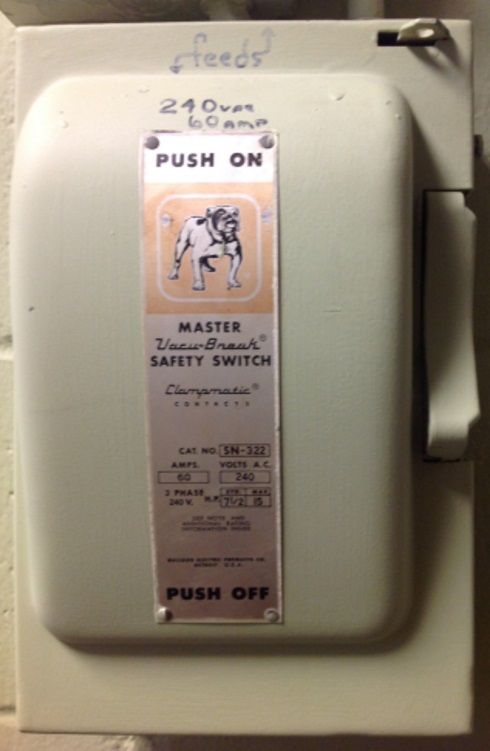
Podcast: Electracy, Part 2 (Kate)
Using the work of Bruno Latour (1987) to negotiate the productive tension between scientists and science writers, this podcast addresses the epistemological concerns generated in Part 1. In addressing the epistemological concerns, the podcast—again sprinkled with student interviews—moves toward a rhetoric of science writing. Once we grant authorship to science writers, we can begin to focus on the production of science writing. Latour's own actor-network theory suggests how science writing might otherwise take place.
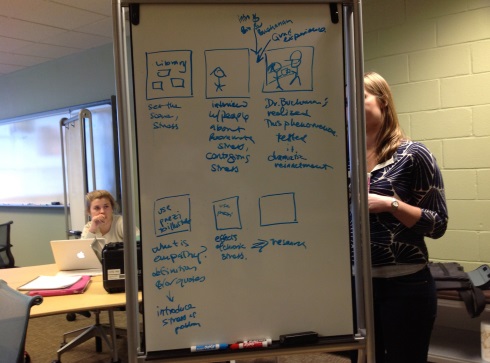
The Course
Students in this class collaboratively researched, planned, produced, and distributed science writing using primarily new media technologies. Students selected and investigated scientific research currently underway at their home institution using both primary and secondary sources (interviews, observations, background research), and then planned, produced, and distributed a range of media such as a podcast (akin to RadioLab or This American Life), a text-heavy publication (akin to Wired), or a series of video shorts (akin to How It's Made) with this research topic as its subject matter. Ultimately, students themselves negotiated the focus and tone of their own publications.
Students enrolled in this course cultivated the habits of a successful professional communicator working in an increasingly collaborative, free-form, and mediated work environment. Students likewise developed an understanding of how rhetoric shapes science—both its practices and its public reception. Additionally, students established a voice as a writer, understood the principles and practices of primary and secondary research, gained comfort and competence with new media production and distribution, and developed sophisticated and critical responses to (new media) technology.
These student productions constitute the entirety of the work of the course. (All students signed waivers allowing us to share their work here.) As a new, experimental course, it enrolled a total of seven students. These productions tackle both a range of subject matter and a range of production approaches not only in terms of media but also style, tone, and narrative complexity. In addition to brief introductions, beneath each student project we provide analyses in terms of articulation, design, hospitality, and electracy. These analyses address equally the production and its composition, and how both make manifest these four concepts.
Student Video: Contagious Stress (Kate and Kelly)
This thorough video explores research on stress. The video, which articulated this research with the experiences of college students, includes interviews with researchers, reenactments of experiments, explications of key concepts, and interviews with college students about stress. Reflecting much of what Kate worked through in her Electracy podcasts, this video builds an engaging and in-depth story by moving beyond the scientists themselves and out across the broader networks of which their work is part.
Analysis of Contagious Stress
Articulation: Two interlocking features strike us about this video in terms of articulation: 1) the seamless weaving of interviews, explications of scientific terms, and reenactments of experiments; and 2) the joining of social science experiments with the experiences of those who might well benefit from such research. This video is thus articulate mechanically in terms of production and conceptually in terms of knowledge-making. Logomechanics, in other words, made this video. Jennifer Rice (2008) argued that such logomechanics are capable of imagining, improvising, and enacting “the material deployments of meaning and its operation” (p. 372). The depth of their research, their narrative imagination, and their mechanical deftness are all on display in this video.
Design: From an instructional design perspective, this project reflects a positive outcome in light of our goals for the course. The video effectively combines motion, text, and audio to deliver a story that is engaging, informative, and articulate. Although the students in this group had some prior experience working in audio and video podcasting, they did not rest on their laurels. Instead, the students used their experience in order to go deeper into how the technical construction of a story can effectively articulate the topic in fresh ways.
Hospitality: This project's focus on stress and empathic response is but one clue to its enactment of hospitality by way of common ground. In addition to their investigation being primarily concerned with the emphatic response to stress, itself an instance of common ground, the video technology elicits particular kinds of response from Kate and Kelly as co-collaborators with it. Because video production entails the layering of auditory and visual media, the audio and video components share the same space and time. That is, their simultaneity is their common ground. Kate and Kelly responded with certain production choices to honor this shared space. By visually recording reenactments of the Trier Social Stress Test, they at once invited their audience to the very site/sight of knowledge-making in their research and generated visual media to accompany their auditory explanation of that same research. Navigating the simultaneous dwelling of different media layers in a common space required hospitality among the technology and its student producers.
Electracy: When Kelly and Kate were composing this video, their intended audience was ever on their minds. From the moment they selected Dr. Buchanan's scientific paper as the subject of the video, Kelly and Kate were always trying to think of how to frame his research in a way that would engage an audience of Saint Louis University students. They could immediately observe the contagious stress phenomenon in their own lives, but Kelly and Kate wanted to find an inroad into the lives of their audience by applying it to a specific aspect of their lives. By using student interviews, the framework of a semester's key stress points of midterms and finals, and relying heavily on campus imagery, they grounded the audience within the familiar context of their lives as SLU students. In order to avoid the so-called dumbing down of science many science writers fall prey to, Kelly and Kate attempted to retain the authenticity of Dr. Buchanan's original publication by relying on him and his staff to explain the more complicated science topics. By taking the essential points of Dr. Buchanan's piece and black-boxing the less-essential (though still intriguing) facets, Kelly and Kate re-articulated Dr. Buchanan's original article, an articulation that is arguably more appealing and relevant to SLU students because of their rhetorical choices.
Student Podcast: “Twins” (Grace and Debbie)
Grace and Debbie explored qualitative research about twins conducted by twins. They set up the podcast as an episode of a larger program, River Rats, based out of the class. This playful podcast builds a narrative through the articulation of the research itself, the researchers' experiences as well as their methodology, and the personal experiences of Debbie, a twin. These articulations do important epistemological work, which makes Grace and Debbie, in a real way, scientists.
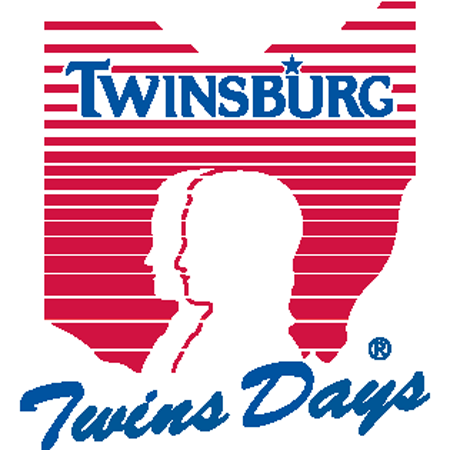
Analysis of “Twins”
Articulation: We can see articulation at work here in several crucial ways. Primary is the re-articulation of the twin experience itself. The linking of Debbie's own experience as a twin with qualitative research on twins works to re-articulate common stereotypes about twins. By keeping the lived experience of twins close by, the scientific research articulated here is strengthened, and so a less biologically deterministic understanding of twins emerges. Particularly noteworthy, then, is that the biology/chronology language used by Grace and Debbie very much appealed to the researchers themselves, who indicated that they would be borrowing this language in the future. Understood logomechanically, we hear how Grace and Debbie foregrounded their experiences by virtue of their ability to stitch together audio from several distinct sources. The effectiveness of this articulation is, in part, a function of Grace and Debbie's mechanical deftness.
Design: While the students who composed Contagious Stress were building their technical skills in story construction and new media technology, the students involved with the podcast on twins started as novices. Although their lack of prior exposure to new media technology may have seemed like an obstacle, their ability to overcome some of the technical challenges of podcasting perfectly demonstrates how learning new media tools can build skills in science writing in substantial ways. Throughout the semester, each successive version of their project demonstrated significant leaps in articulation and technical skill. The students in this group rapidly moved from a fairly straightforward recording with sound effects to an engaging in-depth analysis of the scientific research on twins. By design, the entire class was able to witness this rapid growth in articulate writing and technical skill. Their growth inspired other students to work harder on their projects.
Hospitality: One of the most striking attributes of Grace and Debbie's podcast project is its conversational, often comedic tone. Their playful approach no doubt helps them establish common ground and a sense of ease with their audience, but it displays especially their finesse in practicing openness. In many instances, their choice to include sound effects was initially based on the simple fact that they were available for inclusion. Seizing the opportunity of availability, they opened their creative process to the capacities of the technology. These capacities then largely shaped the project's overall vibe. Grace and Debbie's tone helps their audience feel welcome, and their narrative structure opens the project in such a way as to welcome them even further. At several points, they pull back from their conversation with the twin researchers to expand upon a complex term they mentioned or provide an explanation for the audible laughter that consumes the group when the researchers refer to one another by their pseudonyms for the first time. These sorts of meta-remarks pepper the entire production, and they effectively open more of the project for its audience. They are not just laughing at the inside jokes, but letting their audience in on them. What could have easily remained for the audience a passive observation of a conversation among scientists instead morphs into an open, hospitable invitation to know more of its parts.
Electracy: What it is most striking about this podcast as an example of science writing is how it engages its audience. Kate's interview with Debbie (in Electracy) covered a variety of topics, the most elucidating of which were Debbie's thoughts on the rhetorical challenges of composing this piece. Initially, Grace and Debbie wanted to do a video composition, but the authors of the scientific paper Grace and Debbie used denied the use of videotape. The novelty of the visual sameness of identical twins would surely have been an appealing element to their audience, but the use of only audio allowed Grace and Debbie to hone their audience's attention on what was truly important about their podcast: the uniqueness of twin relationships. Although they did not deliberately choose to a create podcast, if given the opportunity to complete their podcast in a different medium, Debbie would still have done a podcast. By depriving the audience of the visual aspect of twins, she and Grace were able to more universally appeal to their audience, allowing a listener to observe these aspects of twin relationships and more easily apply them to the listener's own relationships. As such, they made the research on twins immediately relevant to their listeners, articulating this scientific research to new audiences, as any good piece of science writing does.
It is also worth noting that on two occasions Grace and Debbie explicitly describe what they are doing as science (rather than science writing). At 16:33 they describe one of their classmates as “a fellow new media scientist,” and at the close of the podcast, they describe the class as a “New Media Science” course. Because at other moments they do say science writing, it might be safe to assume that they are aware of the distinction, and decided, in the above moments, to articulate their work as science. Intentional or not, however, the slippage here is telling in terms of the tension between sciecne and science writing.
Student Podcast: Organic & Sustainable (Chris, Emily, and Katie)
The three producers of this podcast structured it as an attempt to define the key buzzwords organic and sustainable. This attempt takes them to a food fair, a philosophy professor, and the dietetics and nutrition lab on campus. Whereas the other two productions took ongoing research and built out, this production picked an issue and dug in. Their new media articulation moved in the opposite direction: they joined up distinct disciplines and activities to formulate a workable and satisfying lexicon for contemporary food practices.
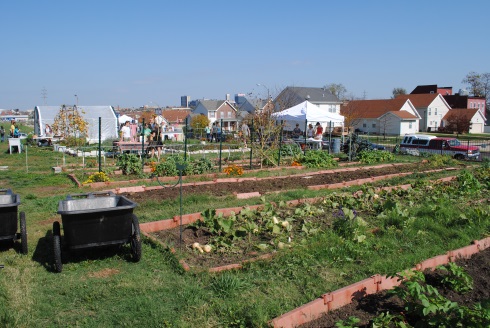
Analysis of Organic & Sustainable
Articulation: With this student production, we have something rather meta happening. After all, their podcast concerns the very conditions of articulation: how do we (or can we) speak of “organic” and “sustainable,” and what is involved and at stake in the formulation of those terms and their concomitant concepts? In other words, what are we articulating when we say “organic and sustainable”? The mechanical and imaginative work of the podcast, then, is collectively deciding on an articulation of these terms, which will of course be contingent and necessarily subject to re-articulation.
Design: Like the podcast “Twins,” Organic and Sustainable demonstrates how effective use of new media tools can help create opportunities to explore articulation in science writing. The scope of the story created for this podcast changed significantly as the semester moved forward. While the students picked a very large topic, they were able to demonstrate how new media technology helped them whittle down the scope of their research topic in order to create a podcast that was both clear and engaging. Also, by choosing to record only audio, the students were forced to be very targeted in their storytelling in a way that was far more focused than if the project was completed for video and text. Their project reflects how the choice of tools, a choice built into the design of the course, can impact the efficacy of the story.
Hospitality: This project features the articulation of concepts through the voices of students who are becoming more knowledgeable in time with their audience. By admitting their uncertainty surrounding the use of the terms organic and sustainable, the podcast establishes an air of easiness between its producers and their audience. The project's investigation is motivated, after all, by the uneasiness that many feel upon encountering these buzzwords. Consulting a wide range of professionals—faculty in nutrition and dietetics, a professor of ethics, academic and industry professionals at a local food event—the student producers approach these complex concepts from several angles, knowing that each will likely resonate more or less with individual members of their audience. They frame their investigation as a journey toward greater knowledge. The portable nature of audio could also literally take them to the streets, meaning that they could take their audience along on their treks across campus to faculty offices, classrooms, and the university's garden. This physical journey then coincides with increasing knowledge, two distinct occasions for inviting their audience along with them while maintaining a sense of ease.
Electracy: The Organic & Sustainable podcast is perhaps the clearest example of science writing that performs some kind of civic work. The purpose of this podcast is to demystify the buzzwords organic and sustainable as a way of empowering a public through a better understanding of these terms. At a time when our society is filled with green and eco-centric initiatives, it is difficult for a public to assess the validity of such arguments without the clear understanding of these heavily used terms. Articulated from a more academic perspective, this podcast could have disengaged its audience by being condescendingly erudite. However, by admitting their own misunderstanding of the terms organic and sustainable, the authors of this podcast humanized themselves, relating to their audience as similarly confused peers. Their rhetorical decisions helped to better engage their audience, priming them to engage the scientific information articulated in the podcast, in turn making the audience more informed consumers.
Reflections on the Course
The goals of this course were pretty simple: we wanted our students to actively participate in the production of knowledge through rhetorically sophisticated and mechanically sound new media composition. We wanted students to be authors, as Slack, Miller, and Doak (1993) described technical communicators, and to be logomechanics, as Rice (2008) described rhetors. By and large, we feel we met those goals. Over the life of this project—from the course (taught in Fall 2012) through to the composition of this webtext (in Spring 2014)—we have had time to move away from the student productions and then return to them. And we are pleased. They have held up beyond the excitement the course itself generated. We witness students participating in the scientific discourses that engaged them and in ways that made their voices a part of the conversation—that connected their lived experiences with research happening at Saint Louis University. This participation took place through student work with media production tools and their dogged interactions with researchers. Many of the students connected with their interviewees. Dana and Catherine, the twins whose research is the focus of Grace and Debbie's podcast, attended the final class meeting of the semester when we officially premiered the final versions of all productions. They brought candy for the class and had a genuinely good time. This interaction speaks to their appreciation of the work done by Grace and Debbie. These successes are admittedly anecdotal. Or, perhaps, it is better to say “specific and local”: students made things they were proud of and in which others found value—outcomes any pedagogical practice hopes to achieve.
We also found the Learning Studio to be a significant asset in helping meet the overall goals for the course. Having a wide range of educational technology tools in a flexible learning environment helped create an atmosphere where students felt encouraged to explore, move around, and communicate freely. It was not a traditional classroom environment but rather a dynamic learning environment where each student was nudged to actively take part in their own learning experience. The classroom worked well both for students unfamiliar with new media production, such as Debbie, Grace, and Emily, and those with more experience, like Katie, Kate, Kelly, and Chris. Treating the classroom as an instructional design element helped create a unique opportunity to meet the goals of the course—one where physical space and new media technologies facilitated students' growth as articulate logomechanics.
Regarding the design of the course, Kate (as a participant-observer) felt like this loosely-structured, one-night-a-week class productively mimicked a professional experience for our predominantly undergraduate course. Because we didn't have structured readings and were not forced to speak to some kind of thesis topic, this course felt unrestricted and wildly free. This could have been a terrifying experience: students are not used to having to make the decisions of how to manage their time in a way that fosters continued progress. (This is usually the teacher's job.) Instead, this course required students to own both their compositions and their experience: they picked the topic, the medium, how to get the work done, and all elements of presentation. They set the tone and path of their coursework for the semester. The course design forced an element of professionalism and maturity not often found in undergraduate courses, which, Kate observes, was particularly challenging to manage along with the usual group schedules and differing expectations of peers. Students had to reach out to professors they did not know, from completely different disciplines, and persuade them to engage, quite extensively, in a humanities-based project. (This in itself is a feat, and the science and social science faculty at SLU deserve credit for their ability to throw themselves into a truly liberal arts experience.)
Reflecting on the experience, Kate remarked that we had basically trained the students of this class to be miniature project managers: they managed a diverse set of resources, with different professional strengths, to produce high-quality results for a long-term and intense engagement/project. Of all the courses Kate took as a student of divided academic interests (the humanities-focused English department and the pragmatically-focused Business college), this one was the most successful at both teaching new things from an academic perspective, but also arming students with pragmatic skills and experiences. Speaking to the course designers, Kate writes, “So, pat yourselves on the back. You deserve it and don't often get credit for doing great work like this. By relinquishing the typical all-knowing and controlling teacher role, you gave your students the autonomy to create their own educational experience, resulting in better podcasts at the end of the semester and a truly outstanding educational experience (a welcome return on investment for those tuition dollars).” Kate has never been around students who were so invested in the work they produced. They all seemed to truly care about producing a high-quality new media composition because they owed it to their groupmates, their interviewees, their audience, and themselves. Although we were all novices in the genre of science writing and in the practices of new media composition, we all cared as if we were professionals. It's rare to find that sort of dedication and interest in undergraduate students, and Kate felt like the design of this course really allowed them to flourish. “I've never thrown myself into a course like I did this one,” Kate writes. “I willfully fell down the rabbit hole of this course for the semester, and it was well worth it. I'm sure my peers feel the same.”
Concluding Thoughts
Our Own Productions
Listening back over our own work, we notice how much the production here mirrors what we saw in student work. Joining together our unique backgrounds, interests, and aspirations helped us to make productive sense of the course. Kate's professional goals, work history, and personal relationships permeate her podcasts on the emergence of the profession of science writing and its historically fraught relationship with science. Katie's research interests in pedagogy, new media, and affect shaped her podcast on hospitality in the new media writing classroom. Christopher's training in instructional design and educational psychology, as well as his work as a musician, are reflected in his podcast and in the whole project's musicality. Nathaniel's research agenda in new materialist rhetorics and his desire to explore alternative forms of scholarship embedded the project in particular disciplinary discourses. None of these connections are necessary, and each component remains distinct even as it joins up with the others. The affordances of audio, video, and webtext allow these articulations to remain foregrounded and relatively flexible. Audiences are able to move around: someone might listen to Katie's podcast on hospitality and its interviews with Grace and Debbie and then listen to Grace and Debbie's podcast to see how hospitality manifests itself in their work. Or someone might connect the articulation video with Christopher's design podcast in an effort to grapple with how such an approach to new media science writing impacted decisions regarding instructional support.
Finally, our shared interests in programs such as Radiolab and 99% Invisible is reflected in the design of this webtext: a one-page scrolling format, embedded media, more prominent acknowledgements (perhaps functioning almost like advertisements), and a slightly less academic approach to author information with images and Twitter handles. While this mixing of genres might create dissonance, our hope is that scholarly work, like the science writing produced by our students, pushes against the genre and design constraints of academic work. Walter Ong (2002) famously argued that writing is a technology that (re)structures thought. Our work implicitly argues that writing (or print) is then but one technology through which we might think. We explore how new media technologies might restructure our thinking, particularly in terms of the mechanics, connectivity, and creativity of scholarship. Work in such media also assumes that scholarship is (always) a performance, which is assessed in terms of the effects produced and the responses evoked. Scholarship is not only the transportation of information but the trans-formation of an audience—what effects and responses do scholars want to produce or evoke? These are always the terms of scholarship: new media production methods simply throw these concerns into sharp relief. They make questions of impact and effect salient once again and in new ways. This is, of course, what made Kairos our choice for a publication venue.
References
Authors
![]() Nathaniel A. Rivers (@sophist_monster)
Nathaniel A. Rivers (@sophist_monster)
Nathaniel Rivers is an assistant professor of English at Saint Louis University. His current research addresses new materialism's and object-oriented ontology's impacts on public rhetorics such as environmentalism and urban design. He is at work on a book project currently titled The Strange Defense of Rhetoric and an edited collection exploring the impact of Bruno Latour on rhetoric and composition. His work has appeared in College Composition and Communication, Kairos, Technical Communication Quarterly, Rhetoric Review, Journal of Technical Writing and Communication, Enculturation, Janus Head, O-Zone, and Present Tense. He blogs at pure_sophist_monster.
 Christopher Grabau (@cgrabauID)
Christopher Grabau (@cgrabauID)
As a member of the instructional design team in the Reinert Center for Transformative Teaching and Learning (CTTL), Chris consults with faculty, graduate students, and teaching staff on instructional elements, course design, and learning technologies. He also researches new pedagogical approaches to instruction, helps to facilitate intentional transitions to online teaching, and works with faculty teaching in the CTTL's Learning Studio.
 Kate Kavanaugh
Kate Kavanaugh
Kate Tschida Kavanaugh is a masters degree graduate from Saint Louis University. Her emphasis was in rhetoric and composition, particularly technical communication. Kate currently works as a business consultant with technology consulting company, Perficient.
 Katie Zabrowski (@katethegrater)
Katie Zabrowski (@katethegrater)
Katie Zabrowski is a doctoral student in rhetoric and composition at Saint Louis University. Her interests in complex vitalism, new materialism and object-oriented ontology guide her thinking in rhetoric, composition, and writing pedagogy. Her current research explores hospitality at the level of ontology, tracing the activity of generosity and relationality at the ontological, disciplinary, and institutional levels.
Acknowledgements
The Students of ENGL 401, Jenny Bay, Collin Brooke, Jeff Rice, Jenny Rice, and Thomas Rickert
A special thanks to these classmates and colleagues for sharing their voices. The project is a fuller articulation because of them.
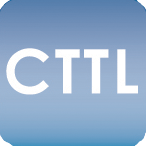 Reinert Center for Transformative Teaching and Learning
Reinert Center for Transformative Teaching and Learning
Special thanks to the CTTL for providing all the institutional, instructional, and infrastructural support for the course. Nathaniel would also like to thank the CTTL for the Innovative Teaching Fellowship (Spring 2012) that provided a course release to develop the New Media Science Writing course.
 Firecracker Press
Firecracker Press
We'd like to thank Firecracker Press for welcoming us into their shop to shoot video, take pictures, and talk new (and old) media. Their work is inspirational and their attunement to process is impressive.
 Magnolia Summer
Magnolia Summer
We'd like to thank the band Magnolia Summer for allowing us to use their track "Door of Return" throughout the video. Their sound is a valuable part of this project.
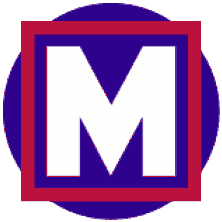 Metro Transit St. Louis
Metro Transit St. Louis
Thanks also to Metro Transit of St. Louis for providing the sites and sounds of trains. Thanks in particular to the DeBaliviere/Forest Park Station.
Buddha Machine
Christopher's podcast makes use of sounds produced by the fabulous Buddha Machine: devices designed to work together to create ambient sounds. In addition to appearing in Christopher's podcast, the idea of the Buddha Machine became a part of the brainstorming associated with this course.
iLife Suite
Except where noted in the transcripts, sound effects and music loops are from GarageBand and/or iMovie.
XStockvideo
Several video clips in "Articulation" were downloaded from XStockvideo, which provides free to download and free to use stock video footage.